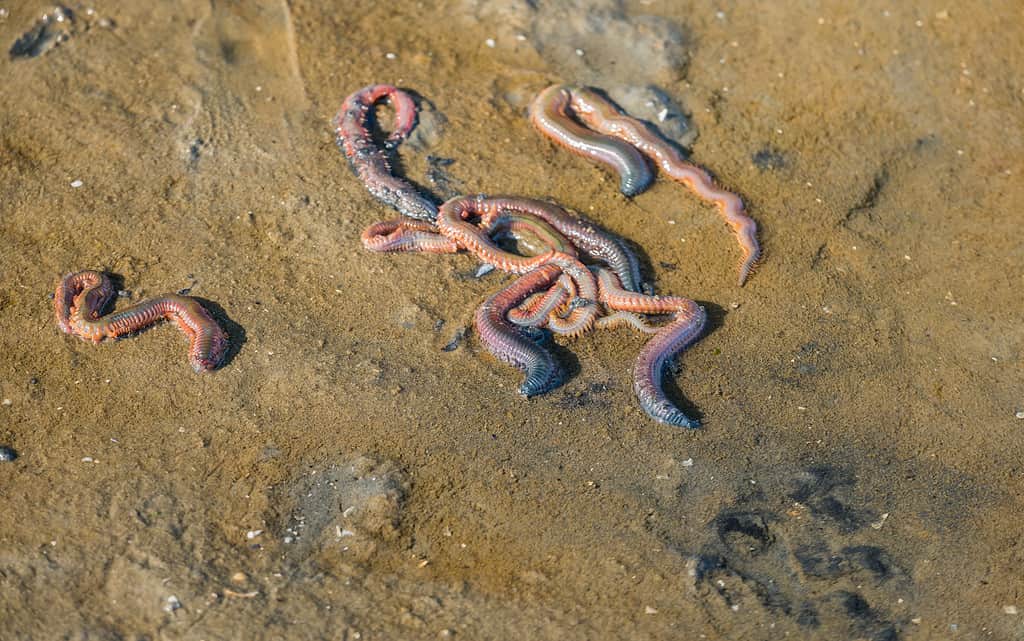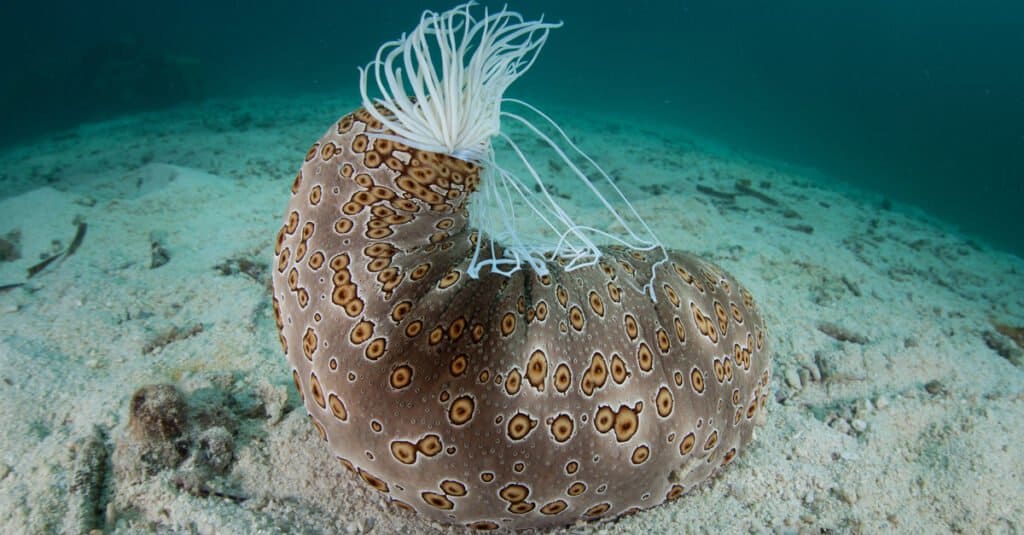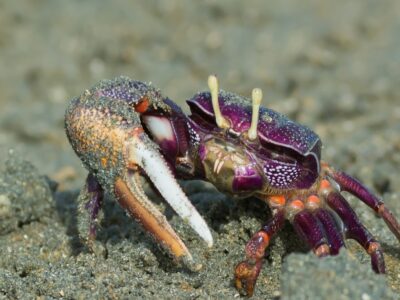A deposit feeder is a detritivorous organism that consumes food particles within or upon the surface of a sediment substrate such as mud in marine environments.
Deposit Feeder Summary
A deposit feeder is any animal that primarily obtains nutrition from organic matter in the sediment. These creatures can live on land as well as in a marine environment. Such animals consume algae, bacteria, particulate organic matter (POM), and other detritus.
Generally, deposit feeders are detritivores, eating material that has settled onto the surface of the substrate or into the sediment. Deposit feeders can exist on land as well as in the water. They utilize two methods for obtaining edible material. One method is eating sediment and filtering it in their bodies. The other manner involves purposefully selecting the edible portions of the sediment and consuming them.
However, they are not the lone form of detritivores. The other type of animals that feed on detritus are known as suspension feeders. These animals consume detritus in water that has not yet settled to the bottom of bodies of water. Barnacles are suspension feeders that sweep potential food and water into their mouths and then filter out the water.

Many types of worms use deposit feeding to find their meals.
©iStock.com/RuudMorijn
What Are the Two Kinds of Deposit Feeders?
Two types of deposit feeders exist. They are called subsurface deposit feeders and surface deposit feeders.
Surface deposit feeders source their food from a substrate’s surface. This process is typically more selective than subsurface feeding because it allows the organism to directly gather food particles from the surface instead of deposited sediment.
Some examples of animals that act as surface deposit feeders include:
- Sea cucumbers
- Fiddler crabs
- Various polychaete worms
- Bass fish
Subsurface deposit feeders are less picky than their surface-dwelling counterparts. These animals consume sediment while they burrow into the substrate. Their bodies absorb the beneficial particles in the soil and then pass the sediment that lacks value. Many subsurface deposit feeders live in marine environments, either in the water or the muddy areas near bodies of water. However, some of them are commonly found in dry areas.
Examples of a subsurface deposit feeder are:
- Earthworms
- Nightcrawlers
- Arenicolid polychaete worms
Other animals have some qualities of deposit feeders, like the larvae of some beetles that feed on materials in the dirt. Still, the term deposit feeder is most often attributed to animals that live in marine environments even though it does not exclusively apply to them.

Sea cucumbers collect food as they move along the ocean floor.
©Ethan Daniels/Shutterstock.com
How Do Deposit Feeders Eat?
The two types of deposit feeders consume their food in different ways. The animals that feed on the surface will gather food directly from the top of the substrate. These feeders will perform this task in many different ways given their unique anatomy.
For example, fiddler crabs will pluck up sediment and use their claws to scrape the bits and pieces they want to eat into their mouths. Meanwhile, some worms that act as surface feeders will use feelers or tentacles to grab food and bring it to them. Some types of fish, like bass, will create suction with their mouths to draw food into them.
The subsurface deposit feeders burrow into the substrate and consume sediment as they go. For example, earthworms eat material as they burrow, absorb what they need, and excrete the rest. These animals leave extensive castings behind.
The ways that these animals find and consume food are just as diverse as deposit feeders.
How Are Deposit Feeders and Filter Feeders Different?
Filter feeders and deposit feeders can seem closely related at times. After all, the animals consume small bits of food material and they’re often in marine environments. Considering the similarity between the way a barnacle and an earthworm obtain food, the types of feeding can be hard to tell apart.
The easiest way to look at how these two types of feeding are different is according to the medium in which the animals find their food.
Suspension feeders, specifically filter feeders, obtain their food by traveling through water or by taking in water from their environment, filtering out bits of food as they move through it. After they are finished getting the food particles, they flush out the water and other waste products.
For example, oysters will attach themselves to a substrate and filter the moving water in their area to find suitable food.
Deposit feeders are different. They will feed on the deposits that are made on the substrate. Sometimes, that involves picking material directly off the bottom of muddy sediments as fiddler crabs do. In other cases, the animal will burrow directly into the dirt and consume sediment, like earthworms. Earthworms consume dirt as they move through the substrate, filtering out the soil that does not have any nutritional value for them.
In a sense, subsurface deposit feeders are similar to filter feeders. Yet, they consume different foods than one another and they perform different roles in their environment.

Worms leave behind casts of their digested material that did not contain nutrition for them.
©iStock.com/James53145
What Role Do Deposit Feeders Serve in Their Environment?
Generally, deposit feeders help increase nutrient cycling and oxygenation within their environments, especially in the case of marine animals. Moreover, animals that feed in this way can also return dissolved nutrients to the water column. Some studies have also found that deposit feeders can alter the rate of mineralization in their environment.
Deposit feeders perform a valuable function while simultaneously obtaining the benefits of consuming material that would otherwise be left behind.







